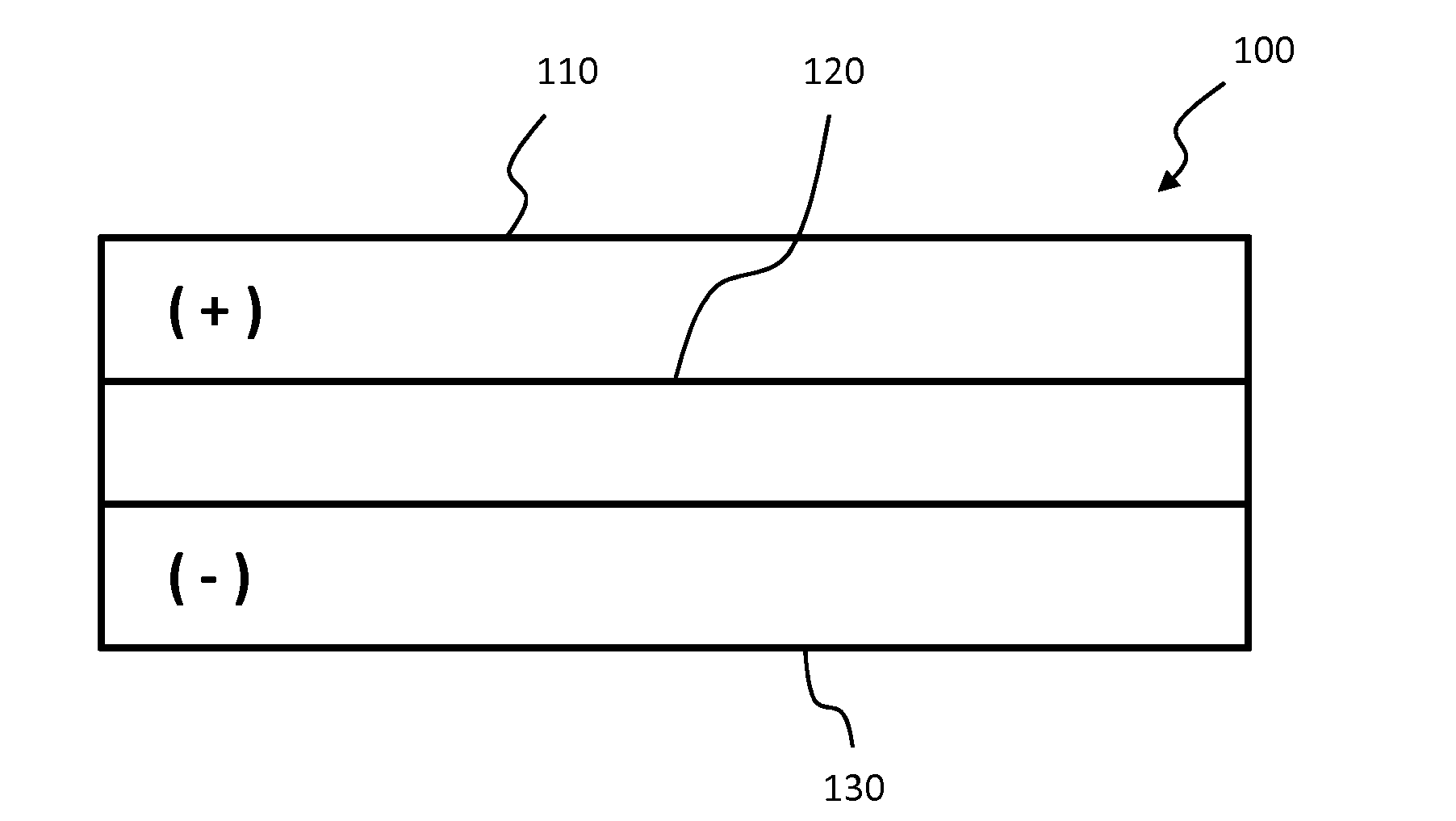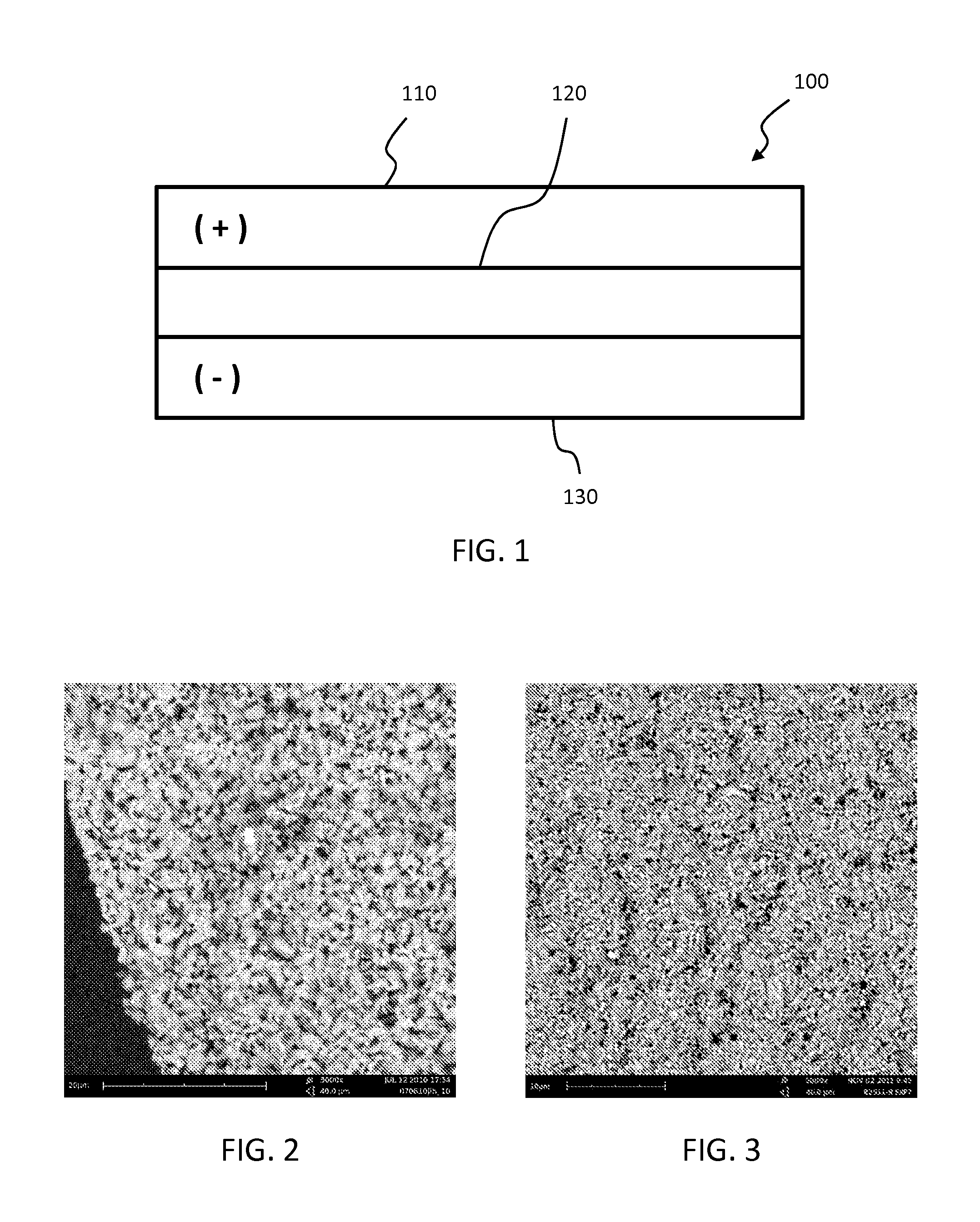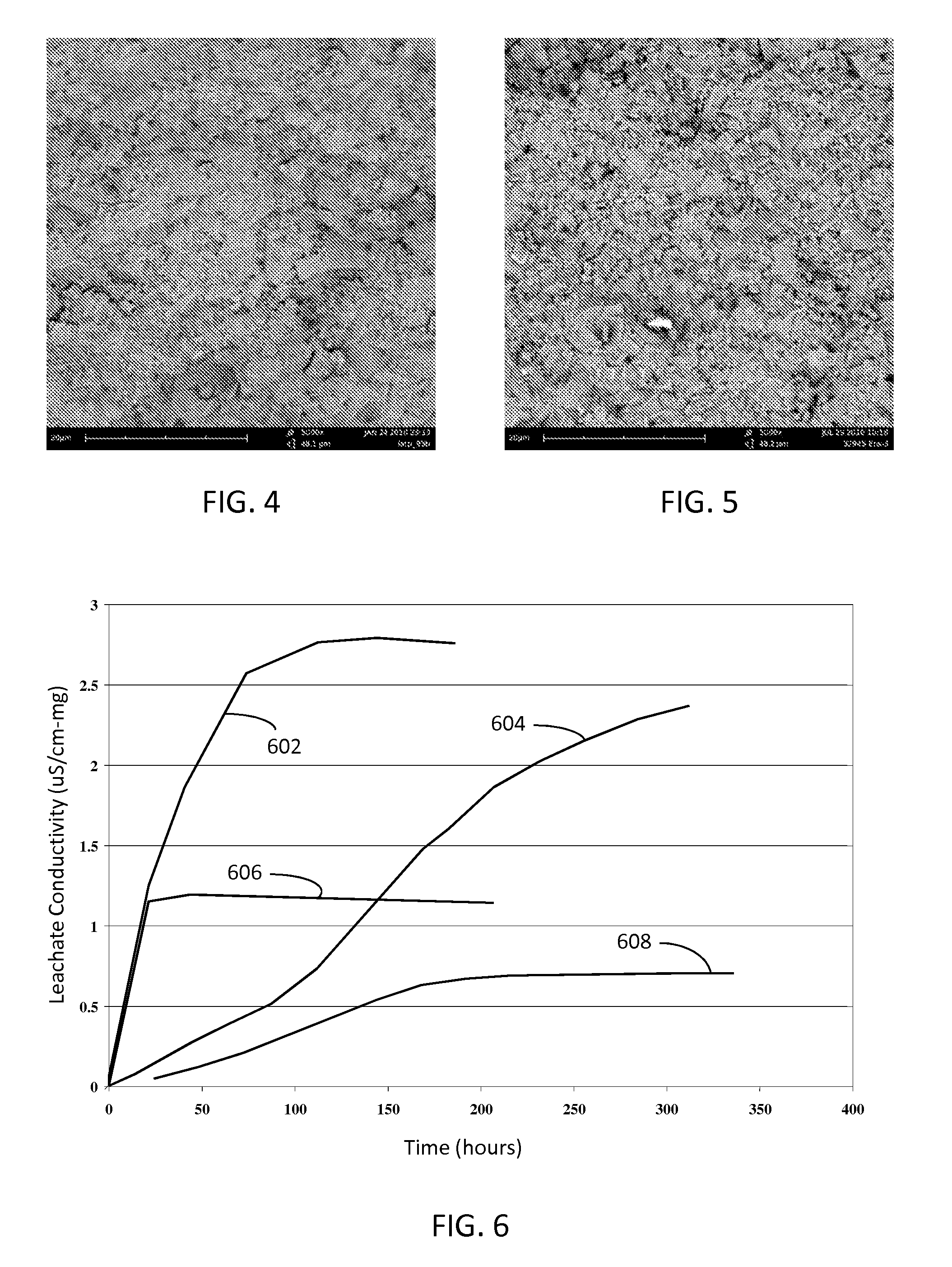Solid ceramic electrolytes
- Summary
- Abstract
- Description
- Claims
- Application Information
AI Technical Summary
Benefits of technology
Problems solved by technology
Method used
Image
Examples
examples
[0039]Lithium aluminum titanium phosphate (LATP) solid ceramic electrolytes were prepared by solid state processes. Ammonium phosphate, aluminum oxide, titanium oxide and lithium carbonate powders were mixed in a stoichiometric ratio to produce Li1.4Al0.4Ti1.6(PO4)3. The powder batch was calcined for 2 hours at 700° C. The resulting material was milled to an average particle size of about 10 μm and then calcined again for 2 hours at 700° C. The resulting material was then milled to ˜0.3 μm average particle size in a solvent. Suitable solvents include ethanol, butanol and propylene glycol, which may be optionally combined with a dispersant such as Phospholan 236 (commercially available from AkzoNobel N.V. of Amsterdam, Netherlands).
[0040]Membrane samples were prepared using various additives, which may act as grain growth inhibitors in some samples. Samples were also prepared with no additives. In the case of an additive being used, 3-6 mol % of an additive was added to the LATP batc...
PUM
| Property | Measurement | Unit |
|---|---|---|
| Grain size | aaaaa | aaaaa |
| Temperature | aaaaa | aaaaa |
| Length | aaaaa | aaaaa |
Abstract
Description
Claims
Application Information
 Login to View More
Login to View More - R&D
- Intellectual Property
- Life Sciences
- Materials
- Tech Scout
- Unparalleled Data Quality
- Higher Quality Content
- 60% Fewer Hallucinations
Browse by: Latest US Patents, China's latest patents, Technical Efficacy Thesaurus, Application Domain, Technology Topic, Popular Technical Reports.
© 2025 PatSnap. All rights reserved.Legal|Privacy policy|Modern Slavery Act Transparency Statement|Sitemap|About US| Contact US: help@patsnap.com



